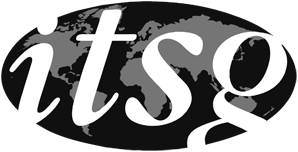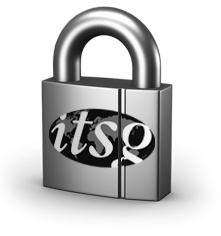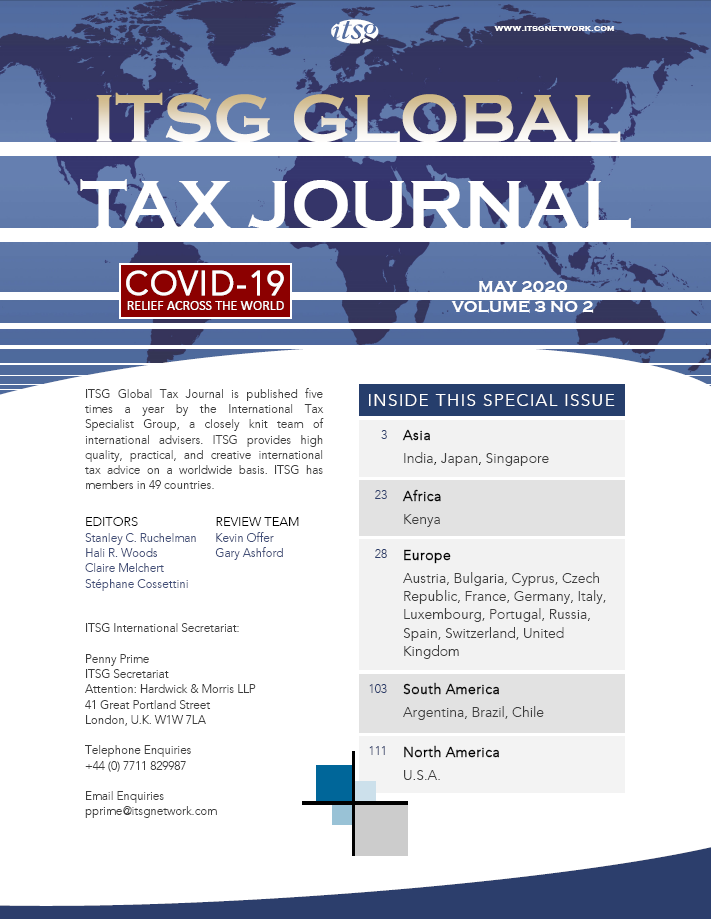This article explains important provisions of the Corona Virus Aid, Relief, and Economic Security Act (“CARES Act” or “Act”) signed into law on 27 March 2020. As will be seen, the CARES Act is an agglomeration of tax law and rules to assist small business. The concepts do not always mesh easily.
Paycheck Protection Program (“P.P.P.”)
The P.P.P. authorizes the Small Business Administration (“S.B.A.”) to guarantee loans made by lenders on favorable terms to eligible small businesses affected by COVID-19. If qualified, Federally guaranteed loans are available in principal amounts of up to $10 million to be used for specified expenditures. If certain conditions are met, the loan may be forgiven in whole or in part with no adverse income tax consequences. The P.P.P. applies to loans of up to the lesser of $10 million or 2.5 times average monthly payroll.
- Which businesses are eligible under the P.P.P.?
The following businesses are eligible to receive a loan under the P.P.P. provided they were conducting operations on 15 February 2020, as demonstrated by salary and payroll tax expenses on that day:
- Any U.S. business concern, veterans’ organization, nonprofit, or tribal business concern that employs not more than greater of:
- 500 employees having the U.S. as their principal place of residence or
- The standard in number of employees established by the S.B.A. for the industry of the borrower.
- A business with more than one location is eligible if it employs 500 or fewer employees per physical location and falls within the “accommodation and food services” sector with the North American Industry Classification System (“N.A.I.C.S.) code that begins with 72.
- Sole proprietors, independent contractors, and self-employed individuals may be eligible provided that proper documentation of business operations exists, such as Forms 1099–MISC received from clients and customers who make a payments to an independent contractor in the course of their businesses, or a tax return that reports business expenses on a Schedule C, Profit or Loss From Business (Sole Proprietorship), on Form 1040, Individual Tax Return, or a Schedule K-1, Partner’s Share of Income, Deductions, Credits, etc., issued by a partnership or L.L.C.
- Any U.S. business concern, veterans’ organization, nonprofit, or tribal business concern that employs not more than greater of:
- In determining whether a business concern qualifies for a P.P.P., is it looked at by itself or with affiliates?
For purposes of the determining the number of employees of an applicant to the P.P.P., the S.B.A. looks at the applicant and all its affiliates collectively. Business concerns and entities are affiliates of each other when one controls or has the power to control the other, or one or more third parties controls or has the power to control both. It does not matter whether control is exercised, so long as the power exists. Affiliation can exist under any one of the following four different sets of rules:
- Affiliation based on ownership. Under this test, a concern is an affiliate of an individual, concern, or entity that owns or has the power to control more than 50% of the concern's voting equity. A minority shareholder may be in control for this purpose if the individual or entity has the ability under relevant organizing documents to prevent a quorum or block action by the board of directors or shareholders.
- Affiliation arising under stock options, convertible securities, and agreements to merge. Under this test, the S.B.A. considers stock options, convertible securities, and agreements to merge (including agreements in principle) to have a present effect on the power to control a concern. Such options, convertible securities, and agreements are treated as though the rights granted have been exercised if the effect is to make each entity the affiliate of the other. This rule does not apply in order to break affiliation that exists under another rule. The rule is also not applied if the options, convertible securities, or agreements are based on the occurrence of conditions precedent incapable of fulfillment, speculative, conjectural, or unenforceable, or where their probability of materializing is extremely remote.
- Affiliation based on management. Affiliation arises where the C.E.O. or President (or other officers, managing members, or partners who control the management) of a business concern also control the management of one or more other concerns. Affiliation also arises where the Board of Directors or management of one concern controls the Board of Directors or management of another concern, or a single individual, concern or entity controls the management of the applicant through a management agreement.
- Affiliation based on identity of interest. Affiliation arises when there is an identity of interest between close relatives with identical or substantially identical business or economic interests. This includes fact patterns involving relatives, individuals, firms with common investments, or firms economically dependent through contractual or other relationships (e.g., an important vendor or customer where 85% of receipts originate with the other party over the last 3 fiscal years, on average). For relatives, this can include operating similar concerns in the same geography. For common investments, this can arise when individuals or firms own a substantial portion of multiple concerns in the same or a related industry, frequently, doing business with each other, or sharing resources, equipment, locations, or employees, or providing loan guarantees or financial or managerial support to each other. Once the S.B.A. makes the determination to aggregate interests, the conclusion can be rebutted by facts that demonstrate the absence of control. S.B.A. generally defers to the judgment of the S.B.A. lender on this count.
Affiliates must be disclosed on the application form. The affiliation rules for businesses are waived for businesses operating in the accommodation and food services industry, in addition to any business operating as a franchise that is assigned a franchise identifier code by the S.B.A.1, and certain businesses that received Small Business Investment Company financing.
- Are foreign-owned business concerns eligible under the P.P.P.?
Yes, although the scope is not entirely clear as of the date of this article. Initially, foreign-owned businesses appeared to be expressly ineligible in the sample application form that was published. However, the troublesome language was deleted in the final application form published by the S.B.A. Anecdotal experience is mixed. One adviser we know reports that all foreign-owned businesses advised by his firm have had their P.P.P. loan applications denied. Another adviser reports that at least one foreign-owned U.S. business concern had a P.P.P. loan application approved. Outcomes may be dependent on the bank administering the program and foreign-owned enterprises may have greater chances of succeeding with smaller banks with which they are an important customer under an existing relationship.
The open question is whether guarantees by U.S. management will be required as is normally the case in other S.B.A. loans to foreign-owned businesses, such as the Economic Injury Disaster Loan Emergency Advance Program (“E.I.D.L.”). For E.I.D.L. loans that are issued to business concerns that are not foreign-owned, guarantees are required from the owners of the business. For such loans issued to foreign-owned business concerns, security must be posted, and management guarantees are required. See pages 121 and 122 of the S.B.A.’s Standard Operating Procedure (SOP) 50 10 5(K), Subpart B, Chapter 2.
- On what date must a business actually be operating?
The business must have been operating on 15 February 2020, as demonstrated by the payment of salary and payroll taxes or the payment of fees to independent contractors and the reporting of such fees on Form 1099–MISC in prior years.
- In what circumstances can a business concern that meets the eligibility test be disqualified from applying for a P.P.P. loan?
A business concern can be disqualified in any of the following circumstances:
- It is engaged in any activity that is illegal under federal, state, or local law,
- The claim for employment relates to household help such as nannies or housekeepers,
- An owner of 20% or more of the equity of the business concern is incarcerated, on probation, on parole, presently subject to an indictment or has been convicted of a felony within the last five years, or
- The business concern or any business owned or controlled by the concern or any of its owners has obtained a direct or guaranteed loan from the S.B.A. or another Federal agency that is currently delinquent or for which there has been a default within the last seven years and as a result caused a loss to the government.
- How is the eligible loan amount determined?
An eligible borrower may borrow up to $10 million, subject to a cap. The cap is 250% of the average total monthly payroll costs incurred during the preceding year.
Payroll costs includes the sum of all payments for employee compensation, including salary, wages, commissions, cash tips, payment of vacation, parental-, family-, medical-, or sick-leave, allowance for dismissal or separation, payment required for group health benefits (including insurance premiums); payment of retirement benefits; or payment of state or local tax assessed on employee compensation. Employee compensation is capped at $100,000. In broad terms, this means that monthly salaries taken into account are capped at $8,333.33. Salaries paid to employees outside the U.S. are not taken into account.
For sole proprietors or independent contractors, the sum of payments of any compensation to a sole proprietor or independent contractor that is a wage, commission, income, net earnings from self-employment, or similar compensation, is taken into account up to $100,000 in a year.
- How must the loan be used in order to be eligible for forgiveness, discussed below?
During the covered period, the proceeds of a loan received under the P.P.P. may be used for the payment of:
- Payroll costs,
- Rent and utilities, and
- Interest on any mortgage obligation and any other debt obligations incurred prior 1 March 2020.
Payroll costs consist of compensation to employees whose principal place of residence is in the U.S. Compensation includes salary, wages, commissions, or similar compensation. Also included are:
- Cash tips or the equivalent are included in compensation based on employer records of past tips or, in the absence of such records, a reasonable, good-faith employer estimate of such tips,
- Payments for vacation, parental, family, medical, or sick leave,
- Allowances for separation or dismissal,
- Payment for the provision of employee benefits consisting of group health care coverage, including insurance premiums, and retirement,
- Payment of state and local taxes assessed on compensation of employees; and
- For an independent contractor or sole proprietor, wage, commissions, income, or net earnings from self-employment or similar compensation.
Although at the time of this writing there is no official guidance on point, self-employment income in the context of a partnership generally is thought to be covered in self-employment income. The key issue here is the way self-employment income is measured for this purpose. One possible way looks to a partner’s distributive share of income that is subject to self-employment tax. Another measure might be keyed to guaranteed payments received by partners.
- What is the interest rate for a P.P.P. loan and the maturity date and is there a prepayment penalty?
The interest rate is 1% and the maturity date is two years from the date of issuance of the funds. The maturity date is significantly shorter than the maximum dated mentioned in the statute, which is ten years. The S.B.A. determined that a two-year term is sufficient because economic disruptions are expected to abate well before then. The maximum interest rate mentioned in the statue is 4% and the S.B.A. initially mentioned 0.5%. However, banks were reluctant to participate if the interest rate were that low.
There is no prepayment penalty on any payment made prior to 31 December 2020.
- How does the forgiveness of the loan feature work?
The debt proceeds actually used to pay the following expenses during the 8-week period beginning on the date of the origination of a covered loan can be forgiven mostly or wholly free of income tax, provided that 75% of the proceeds of the P.P.P. are used to fund payroll costs.
- Payroll costs (as defined above),
- Interest payment on a covered mortgage obligation incurred before 15 February 2020, for which the debt is secured by a mortgage on real or personal property,
- Payments of rent obligated under a lease in force before 15 February 2020, and
- Payment of utility bills such as electricity, gas, water, transportation, telephone, or internet access for which service began before 15 February 2020
In principle, the amount of the loan used to pay the above expenses for the 8-week period can be completely forgiven. However, the forgiven amount of the loan can be reduced by several factors. As mentioned above, if the 75% allocation to payroll costs requirement is missed, the shortfall will not be forgiven. In addition, and assuming that the balance of the proceeds have been applied to other qualified items, a reduction in monthly average employee headcount or a reduction to any employee’s salary greater than 25% will also reduce the portion of the loan that can be forgiven. The monthly average headcount during the period following receipt of funds under the loan is compared to the prior year.
- Is forgiveness automatic?
The forgiveness of the loan is not automatic. The borrower must apply for forgiveness to the originating lender including the following:
- Documentation verifying the number of full-time equivalent employees on payroll and pay rates. Payroll tax filings, and unemployment insurance filings can be used for this purpose,
- Documentation including cancelled checks, payment receipts, transcripts of accounts verifying payments of other qualified expenses (including debt obligations incurred prior to 1 March 2020),
- Any other documentation determined to be necessary by the S.B.A.,
- In addition, a certification is required from the borrower acknowledging that the amount of the loan that will be used to pay the qualified expenses and that the documentation presented is true and correct. As a false certification is a felony, the individual making the borrower’s certification has a personal interest in ensuring all representations are true.
The amount of the debt forgiven will not be treated as income from the forgiveness of debt, ordinarily subject to U.S. Federal income tax. Also, as the Federal government will repay the bank, it is expected that the debt forgiveness will not adversely affect credit scores.
- Recent Developments
The S.B.A. P.P.P. program ran through all funds appropriated by 16 April 2018. Over 1.6 million loans were granted. As it turned out, some loans were made to publicly traded corporations that were likely not within the definition of a small business for purposes of the S.B.A. rules. Other loans were made to well-endowed universities who had the capital to continue to pay employees. Under public pressure and fear of criminal prosecution for the person signing the loan application, many of corporations and universities announced that the funds would be returned. Subsequently, S.B.A. P.P.P. Q&A guidelines were revised warning publicly traded corporations having substantial market value and access to capital markets that they likely are not able to make a good faith certification that the P.P.P. loan is necessary to support the ongoing operations of the applicant.
On 24 April 2020, a fourth stimulus package was signed into law, the Paycheck Protection Program and Heath Care Enhancement Act. It includes $310 billion to replenish the P.P.P. program, $60 billion for a separate emergency loan and grant program discussed below known as the Economic Injury Disaster Loan program, $75 billion for hospitals and health-care providers, and $25 billion for a new coronavirus testing program.
Economic Injury Disaster Loan (“E.I.D.L.”)
The CARES Act expands the S.B.A.’s existing Disaster Loan Program under Section 7(b)(2) of the Small Business Act to provide financial relief to small businesses affected by the Coronavirus.
- What is the purpose of the E.I.D.L. Program?
The E.I.D.L. program provides assistance to a small business located in a declared disaster area when the S.B.A. determines it is unable to obtain credit elsewhere. It is an existing program that is designed to assist small businesses suffering from a disaster such as a hurricane, flood, tornado and the like.
A small business that meets the S.B.A. Size Standard2 is eligible to receive a loan under the E.I.D.L. program. In general, size standards define the largest size a business can be to participate in government contracting programs and compete for contracts reserved or set aside for small businesses. Size standards vary by industry, and are generally based on the number of employees or the amount of annual receipts of the business, generally under the North American Industry Classification System (NAICS). When determining the size of a business concern, headcount and receipts of affiliates of the applicant small business must be taken into account. More information appears in the S.B.A. regulations3.
Substantial economic injury means the business is unable to meet its obligations and to pay its ordinary and necessary operating expenses. EIDLs provide the necessary working capital to help small businesses survive until normal operations resume after a disaster.
Under the E.I.D.L. program, the S.B.A. can provide up to $2 million to help meet financial obligations and operating expenses that could have been met had the disaster not occurred. The loan amount is based on the actual economic injury to the small business and financial needs, regardless of whether the business suffered any property damage. In general, tax returns must be submitted as part of the application process and personal guaranties must be provided by the owners.
- What special modifications have been made to the E.I.D.L. program to address the COVID-19 pandemic?
The Cares Act modifies certain provisions in the E.I.D.L. program to facilitate the disbursement of funds to a broader class of eligible applicants.
Broader Scope of Applicants
From 31 January 2020 to 31 December 2020 (‘the Covered Period”), the following organizations may apply for E.I.D.L. loans, in addition to small business concerns, private nonprofit organizations, and small agricultural cooperatives:
- Businesses with 500 or fewer employees,
- Sole proprietorships, with or without employees, and independent contractors,
- Cooperatives with 500 or fewer employees,
- E.S.O.P.’s with 500 or fewer employees, and
- Tribal small business concerns.
Waiver of Certain Requirements
In addition, the Cares Act authorizes that S.B.A. to waive certain require ments that ordinarily must be met when applying of a loan under the E.I.D.L. program. Consequently, the following requirements are waived:
- All rules related the personal guarantee on advances and loans of not more than $200,000 during the Covered Period for all applicants,
- The requirement that an applicant must be in business for the one-year period before the disaster, except that no waiver may be made for a business that was not in operation on 31 January 2020, and
- The requirement that an applicant be unable to obtain credit elsewhere.
Standard for Approval
During the covered period, the S.B.A. may approve an applicant based solely on the credit score of the applicant and will not require an applicant to submit a tax return or a tax return transcript for such approval. Alternatively, the S.B.A. may use another appropriate method to determine an applicant’s ability to repay the loan.
Emergency Grant
During the Covered Period, an eligible entity for an E.I.D.L. loan – as determined under the expanded scope of eligibility – may request an advance of $10,000. In principle, the advance must be made by the S.B.A. within three days after the request is received. While the request must be verified before the advance is disbursed, verification is effected solely by self-certification of the applicant.
An advance may be used for any allowable purpose, including:
- Providing paid sick leave to employees unable to work due to the direct effect of the COVID–19 virus,
- Maintaining payroll to retain employees during business disruptions or substantial slowdowns,
- Meeting increased costs to obtain materials unavailable from the applicant’s original source due to interrupted supply chains,
- Making rent or mortgage payments, and
- Repaying obligations that cannot be met due to revenue losses.
Once the grant is received, an applicant is not be required to repay the advance even if subsequently denied a loan.
Business Tax Provisions
The CARES Act provides several tax provisions to provide liquidity for business.
- What is the employee retention credit and how does it work?
The employee retention credit is a refundable payroll tax credit for 50% of wages paid to employees after 12 March 2020 and before 1 January 2021. The credit is available to employers whose operations were fully or partially suspended due to a COVID-19-related shutdown order or whose gross receipts declined by more than 50% when compared to the same quarter in the prior year.
The credit is based on qualified wages paid to employees. For employers with greater than 100 full-time employees, qualified wages are wages paid to employees who are not working due to the COVID-19 virus. For eligible employers with 100 or fewer full-time employees, all employee wages qualify for the credit, whether the employer is open for business or subject to a shut-down order. The credit is provided for the first $10,000 of compensation paid to an eligible employee and includes health benefits.
The credit for businesses experiencing a downturn, such as a suspension of operations due to a COVID-19-related shutdown order or with decline in gross receipts, for any days in March 2020 should be applied for using the employer’s Q2 Form 941, 941-SS, or 941-PR, reporting 50% of the qualified wages for March together with the Q2 qualified wage amount. The credit should not be reported on the first quarter form. - Have payment of employer payroll taxes been deferred?
Yes. The CARES Act allows employers and self-employed individuals to defer payment of the employer share of the Social Security tax they otherwise are responsible for paying to the Federal government with respect to employees. Employers generally are responsible for paying a 6.2% Social Security tax on employee wages. The provision requires that the deferred employment tax be paid over the following two years, with half of the amount required to be paid by 31 December 2021 and the other half by 31 December 2022. The Social Security Trust Funds will be held harmless under this provision.
Employers receiving a P.P.P. loan and benefiting from debt forgiveness cannot take advantage of this provision. - May net operating losses now be carried back?
Yes. The CARES Act relaxes the limitations on a corporation’s use of net operating losses (“N.O.L.’s”). Under current law, N.O.L.’s are subject to a taxable-income limitation equal to 80% of the taxpayer’s adjusted gross income and they cannot be carried back to reduce income in a prior tax year. Now, an N.O.L. arising in a tax year beginning in 2018, 2019, or 2020 can offset 100% of taxable income or alternatively be carried back five years.
If the N.O.L. is carried forward, it would reduce income that is taxed at 21%, and possibly higher rates depending on the outcome of national elections in November. If carried back, it may be usable to reduce income that was taxed at a 35% rate, but interaction with other tax attributes absorbed in the prior year, including general business credits such as foreign tax credits, special deductions, and alternative minimum tax liability in prior years are all items to be carefully considered beforehand.
Several commentators have cautioned that a carryback of an N.O.L. to a year prior to 2018 may be applied to reduce income that was subject to the one-time Code §965 Transition Tax adopted in the Tax Cuts and Jobs Act of 2017, when the U.S. adopted a dividends received deduction for dividends from 10% foreign-owned companies. The Transition Tax was imposed for 2017 on the income of 10% shareholders of foreign corporations. The rate the tax was limited to 8% for earnings invested in operating assets and 15.5% for earnings invested in financial assets. Under the Act, carrying back to years in which the taxpayer was subject to Transition Tax will result in the taxpayer being treated as having made an election not to apply the N.O.L. under Code §965(n).
Taxpayers may make an irrevocable election under the CARES Act to exclude years in which Transition Tax liability existed from the carryback. Such elections must be made by the extended due date of the 2020 return by attaching a statement for each year for which the taxpayer intends to make the election, stating that taxpayer is electing to apply Code §172(b)(3) under Rev. Proc. 2020-24 and the taxable year to which the statement is applicable.
Other commentators have pointed out that liquidity from the adoption of an N.O.L. carryback rule will not be realized until the close of the 2020, when the losses from COVID-19 will be available for carryback. However, under Rev. Proc. 2020-26 taxpayers can potentially obtain a refund within 90 days (for years other than those affected by Transition Tax) by filing Form 1139, Corporate Application for a Tentative Refund (for corporations) or Form 1045, Application for Tentative Refund (for individuals, trusts, and estates), subject to an extended due date of 18 months (or 30 June 2020 for the 2018 tax year). The I.R.S. will start accepting these forms via fax (844-249-6236 for Form 1139, and 844-249-6237 for Form 1045) starting on 17 April 2020. The I.R.S. encourages taxpayers to wait till the 17th and fax the forms to avoid delays caused by physical mail during the crisis.
New York State and New York City have decoupled from the Federal N.O.L. carryback rules. Neither jurisdiction has sufficient free cash to issue refunds of corporate tax. - How are pass-through losses from partnerships and L.L.C. affected by the CARES Act?
Prior to 2018 sole proprietors and individuals who were members of a partnership or L.L.C. in which they were active participants could use the full amount of losses generated by the business to reduce other taxable income. Effective for 2018, “excess business losses” of individuals were not allowed for the taxable year. Such losses were carried forward and treated as part of the taxpayer's N.O.L. in subsequent taxable years. An excess business loss was defined as the amount by which aggregate deductions of the individual exceed the sum of (i) aggregate gross income or gain of the taxpayer plus (ii) a threshold amount of $250,000 or $500,000, depending on marital status.
The CARES Act modifies these loss limitation rules on a retroactive basis. For each year in the three-year period that begins in 2018, individuals can utilize excess business losses to access critical cash flow to maintain operations and fund payroll for their employees. In 2021, the loss limitation rule will come into effect again, and will stay in effect until 2026. - How are refundable alternative minimum tax (“A.M.T.”) credits affected by the Cares Act?
The corporate A.M.T. was a tax computed at lower rates but on a broader tax base. If the A.M.T. produced a tax greater in amount to the ordinary corporate income tax the excess amount was added to the income tax. If in subsequent years the regular corporate tax was greater than the A.M.T., a taxpayer was entitled to a refund.
The T.C.J.A. repealed the A.M.T., allowing unused A.M.T. credits to be carried forward as refundable credits over a four-year period beginning in 2018. The CARES Act accelerates the ability of companies to recover those A.M.T. credits, permitting companies to obtain additional cash flow during the COVID-19 emergency. - How is the limitation on deductible business interest of a corporation under Code §163(j) affected by the CARES Act?
In 2018, a cap was placed on deductible interest expense of corporations. The cap was 30% of adjusted taxable income, which more or less equated to the equivalent of E.B.I.T.D.A., with certain modifications to conform with tax concepts.
For 2019, the CARES Act increases the cap place on allowable interest expense to 50% of adjusted taxable income. The provision temporarily increases the amount of interest expense businesses are allowed. More importantly, for 2020, a taxpayer may elect to use adjusted taxable income for 2019 to compute the amount of the cap, recognizing that for most, 2019 will be a year of greater profits than 2020. - How does the CARES Act correct a technical error regarding “qualified improvement property”?
The CARES ACT makes a technical correction to the T.C.J.A. that enables businesses, especially in the hospitality industry, to write off immediately the costs associated with improving facilities instead of having to depreciate those improvements over the 39-year life of the building. - What is the U.S. Federal income tax treatment of forgiveness of any portion of a P.P.P. loan?
As stated above, forgiveness for those borrowers meeting the requirements will be excluded from the borrower’s gross income. Therefore, no U.S. Federal income taxes will be owed in consequence of either receiving a P.P.P. loan or later meeting the requirements to have it forgiven. However, the I.R.S. announced that the funded expenses may not be deducted. Whether this position is firm remains to be seen.
I.R.S. Pronouncements on Stranded Foreign Individuals
Recognizing that the global outbreak of the COVID-19 virus has significantly limited the ability of many individuals to leave the U.S., regardless of having been infected, the I.R.S. has taken several steps to provide relief to individuals and their employees. For example, Nonresident, non-citizen (“N.R.N.C.”) individuals who perform services or other activities in the U.S. and foreign corporations who employ individuals or engage individuals as agents to perform services or other activities in the U.S. may be considered engaged in a U.S. trade or business. If the individuals performing those services or other activities are temporarily in the United States solely due to COVID-19 Emergency N.R.N.C. individuals or foreign corporations may technically become engaged in a U.S. trade or business. If a U.S. income tax treaty applies, an N.R.N.C. individual or foreign corporation generally will not be liable to tax on business profits or employee compensation unless the business is conducted through a permanent establishment in the U.S.
To provide relief for those N.R.N.C. individuals and their employers and also for American expats who are stranded in the U.S. by reason of flight restrictions and closed border, the I.R.S. announced three measures for individuals stranded in the U.S.
- Revenue Procedure 2020-20
In this procedure the I.R.S. announces the circumstances in which U.S. presence of up to 60 consecutive calendar days will be presumed to arise from travel disruptions caused by the COVID-19 emergency. Those days will not be counted for purposes of determining U.S. tax residency of a nonresident, non-citizen (“N.R.N.C.”) individual. In addition, those days will not be counted for purposes of determining whether an N.R.N.C. qualifies for tax treaty benefits regarding income from personal services performed in the U.S. Typically, the treaty provisions will provide that presence in the U.S. for 183 days or more precludes an individual from being exempt on compensation for work performed in the U.S. on behalf of a foreign employer in circumstance where the compensation is not borne by a permanent establishment in the U.S. - Revenue Procedure 2020-27
For expat Americans who claim the benefit for the foreign earned income exclusion and the qualified housing deduction, days of presence in the U.S. can have an adverse effect on entitlement to the benefits. In this procedure, the I.R.S. announces that the two benefits will not be impacted as a result of days spent away from a foreign country due to the COVID-19 emergency based on having departed the country of residence on or after a specified date where it is reasonable to believe that the required time period abroad would have been met in the absence of the COVID-19 emergency. Dates are provided for various geographic locations as the pandemic spread across the globe. - I.R.S. Frequently Asked Questions and Answers4
In two frequently asked questions and answers, the I.R.S. advises that, for up to 60 consecutive calendar days, certain U.S. business activities conducted by an N.R.N.C. individual or foreign corporation will not be counted in determining whether the individual or entity is engaged in a U.S. trade or business or has a U.S. permanent establishment. Again, the relief is extended only if those activities would not have been conducted in the U.S. but for travel disruptions arising from the COVID-19 emergency.
1 https://www.sba.gov/sites/default/files/2019-04/FrnchsTbl_04092019_1_0.pdf
The contributions of the following persons are acknowledged:
- Andreas Apostolides
apostolides@ruchelaw.com - Neha Rastogi
rastogi@ruchelaw.com - Lisa Singh
singh@ruchelaw.com
Original document can be found at: ruchelaw.com/alerts/cares-act-loans-and-business-tax-provisions

 Login
Login





















































